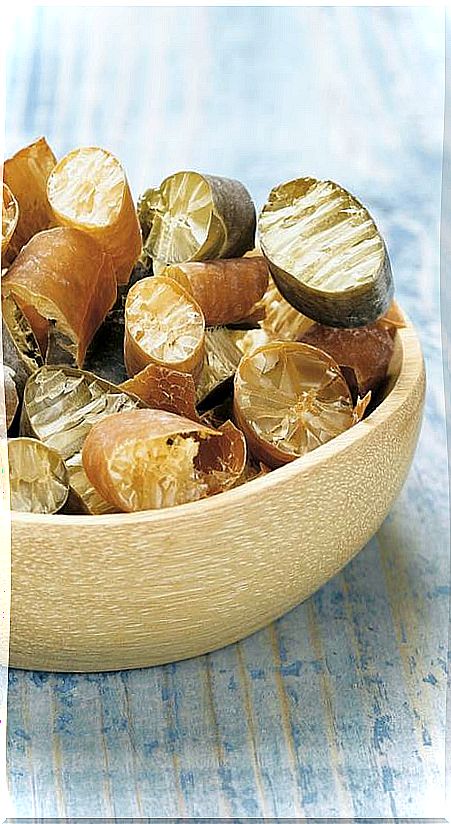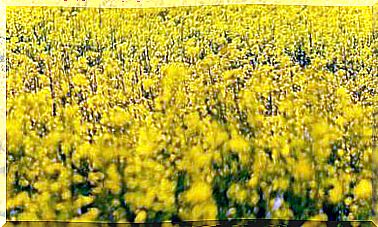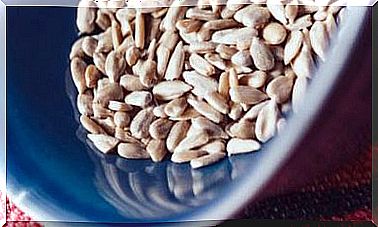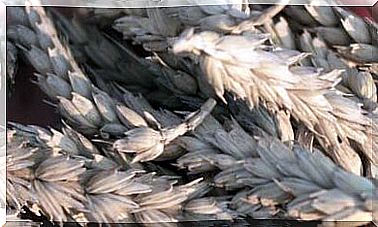Cochayuyo Seaweed: 6 Reasons And 4 Ideas To Add It To Your Diet
The Chilean cochayuyo has been consumed for centuries as a food and popular remedy. Discover its benefits for your health and recipes that you can prepare with this seaweed.

Although seaweed is not a very common food on the tables of our country, in recent years its consumption has increased significantly among people concerned about their health.
The best known and most consumed algae come from Galicia and Japan, and have a texture similar to vegetables. Today I would like to talk about a lesser known alga, native to southern Chile: its scientific name is “Durvillaea Antarctica” and it is popularly known as “cochayuyo”.
The Chilean cochayuyo has been consumed there for centuries as food and as a popular remedy for certain health problems. This seaweed has a more fleshy consistency and volume than the others and culinarily resembles a mushroom more than a vegetable. In Spain it is currently marketed as a food supplement and can be found in organic, diet and herbal products stores.
Nutritional composition of the cochayuyo
- The Chilean cochayuyo is a source of good quality protein. Its contribution per 100 g of seaweed is 11.26 g.
- Contains all the essential amino acids. Highlights the large amount (1.83 g per 100 g) of cystine, a powerful antioxidant and detoxifier of the body by transforming into L-cysteine, and glutamic acid (1.38 g per 100mg) protector and repairer of the digestive mucosa, with anti-inflammatory action, stimulating the synthesis of neurotransmitters and muscle proteins, and precursor of glutathione, the main antioxidant of cells.
- It is also rich in aspartic acid (1.15 g per 100g), an amino acid that stimulates neuronal interconnection, muscle growth, increases energy consumption or metabolism, and by stimulating the production of luteinizing hormone it promotes ovulation.
- Like all algae, cochayuyo is a food very rich in minerals and trace elements, especially in magnesium (1,010 mg per 100 g), calcium (1,160 mg per 100 g), iron (30 mg per 100 g), sulfur (1,040 mg per 100 g), and iodine (490 micrograms per 100 g). It also contains vitamin E (alpha-tocopherol).
- Its fat content is very low (0.27 g per 100 g). On the other hand, it contains abundant soluble fiber (47.5 g per 100 g), which helps to feed the microbiota, prevent constipation, adult diabetes and high cholesterol, and due to its great capacity to retain fluids, increases the feeling of satiety, so useful in controlling obesity.
- Much of this fiber, between 30 and 40 g, is alginic acid, one of the most powerful detoxifiers due to its chelating power, capable of binding to toxins such as heavy metals and radioactive substances and dragging them out of the body.
Medicinal properties of cochayuyo
- Cochayuyo has powerful purifying, antioxidant and chelating properties, as we have just seen in its composition, which justify its indication in diets and detoxification and organic cleansing cures, especially during and after chronic or intense pharmacological treatments (anti-inflammatory, corticosteroids, immunosuppressants, chemotherapy …), or excessive consumption of alcohol or other addictive substances, or when we want to get rid of excess estrogen.
- It is also of great help to promote liver function, to protect and reduce inflammation of the digestive mucosa, correct constipation and, due to its richness in mucilages, reduce gastric acidity and promote expectoration.
- Its high fiber content regulates the absorption of cholesterol and glucose, and at the same time its satiating effect, together with the contribution of iodine, makes it highly recommended for weight loss diets.
- It is an excellent restorative in situations that need an extra supply of minerals and trace elements, such as in childhood, pregnancy or the elderly, and in anemia.
- Due to its abundant supply of calcium, sulfur, iodine, iron and magnesium, and its content in silicon, zinc and vitamin E, it is a great help to strengthen hair, skin, and nails, and in dermatological problems in general (acne, eczema , psoriasis …).
- For all these cleansing and restorative properties, it also has an immunostimulating action, increasing our defenses.
What can be cooked with spoonbill?
This large algae, which can measure more than 15 meters, once chopped, can be consumed raw as an aperitif and in salads or cooked in soups or purees together with vegetables and cereals (adding it to legumes facilitates its digestion), pasta , or as an ingredient in empanadas, fried, baked, paellas …
Due to its ability to retain liquids, and its high content of glutamic acid, the spoonbill is impregnated with the ingredients that surround it, enhancing its flavor.
It can also be used raw and ground to dress salads, soups and purees, or to add to juices or detox broths, for example by boiling it for one hour with six medium onions, two sticks of celery, four carrots and an apple. This broth is consumed cold before meals, with the juice of a freshly squeezed lemon, a tablespoon of beer or nutritional yeast, and another of crushed cochayuyo seaweed.
Here we propose some tasty recipes with cochayuyo.
Raw cochayuyo appetizer with garlic and parsley
Ingredients
- Raw cochayuyo
- Garlic
- Parsley
- Lemon
- Olive oil
- Salt
Preparation (5 ‘)
- Soak the cochayuyo in water for as long as you consider necessary according to the desired texture (if you like it “al dente” about 15-30 minutes, if you prefer it more mellow for 2 to 4 hours).
- Drain and prepare a dressing with lemon juice, garlic and finely chopped parsley, olive oil and a little salt. Let it marinate for a long time so that it takes on the flavor better.
Variants
It can be taken as is as an aperitif, added to the salad, either raw vegetables or pasta or to a plate of cereals or legumes.
We can also boil it until it is tender and then season it.
Rice with broccoli, green asparagus and cochayuyo
Ingredients
- 400 g semi-brown rice
- 40 g of cochayuyo
- 1 broccoli
- 1 bunch of green asparagus
- 1 large onion, chopped
- Salt and virgin olive oil
- Aromatic herbs to taste (oregano, thyme …)
Preparation (15 ‘+ 25’ cooking)
- Sauté the washed cochayuyo with the chopped onion for about 10 minutes, add the broccoli in small bouquets and the chopped tender asparagus, turn and pour the rice (previously soaked for a few hours, washed and drained)
- Stir everything together for a couple of minutes and add boiling water.
- Let it cook until the rice is just right.
Quinoa with artichokes, leek and cochayuyo
Ingredients:
- 400 g quinoa
- 40 g of cochayuyo
- 1 Kg of artichokes
- 3-4 leeks
- Seawater
- Salt and virgin olive oil
Preparation (15 ‘+ 35’ cooking)
- Wash the quinoa well.
- Bring natural water and sea water (1/3 of sea water) to a boil in a pot. When it starts to boil, throw the quinoa and let it cook for about 15 minutes, lowering the heat a little.
- Cut the leeks and sauté them with the washed cochayuyo.
- Add the peeled and chopped artichokes without letting them cook too much.
- When you have the quinoa ready, mix everything, stirring for a few minutes so that it takes on flavor and serve.
Variants
Quinoa can be lightly toasted, before boiling, with a pinch of turmeric or some other seasoning such as cumin, fennel …









